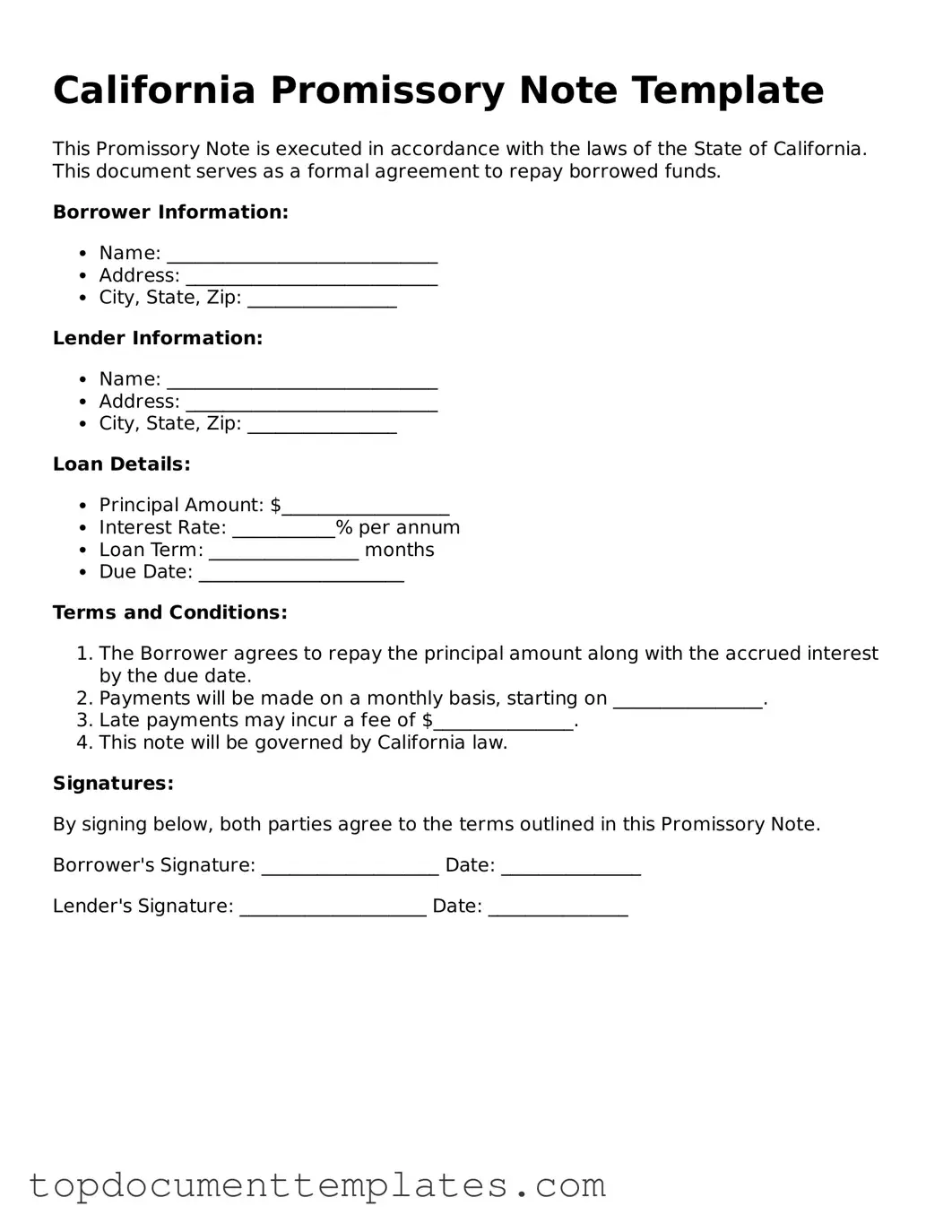Valid Promissory Note Form for California State
A California Promissory Note is a legal document in which one party promises to pay a specified sum of money to another party under agreed-upon terms. This form serves as a written record of the loan, detailing the repayment schedule, interest rates, and any other conditions. Understanding its components is essential for both lenders and borrowers to ensure a clear agreement.
Ready to create your own California Promissory Note? Fill out the form by clicking the button below.
Open This Form
